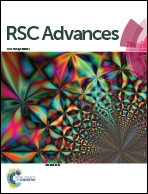A mechanistic study on multifunctional Fei-Phos ligand-controlled asymmetric palladium-catalyzed allylic substitutions†
Abstract
To shield light on the mechanism of palladium-catalyzed allylic substitutions with structurally diverse nucleophiles (up to 99% ee) in the presence of Fei-Phos ligand (chiral trans-1,2-diaminocyclohexane-derived biphosphine, CycloN2P2-Phos) as an effective chiral P-ligand, mechanistic studies were performed for clarification of the role of multifunctional Fei-Phos in this reaction. The cooperative action of nitrogen and phosphorous atoms in the present Pd-catalyzed allylic alkylation is proved to be a diphosphine-based catalyst system but not a nitrogen-controlled or monophosphine-involved transition state.


 Please wait while we load your content...
Please wait while we load your content...